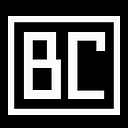What Nobody Tells You About Conducting User Research
Hi! I’m Yashika, a UX Designer 2 at a B2B Software and Data company based in the US. Being a self-taught designer, I like to give back to the design community by sharing my experiences as a UX designer on a growing design team, where I design for complex B2B software products.
As a UX designer, my design decisions are based on a combination of instinct and data. Recently, I had the opportunity to lead the first User Research project for our design team. Here’s what I wish I had known when starting from scratch.
Getting Users Is Tough
Having worked at a company where the User Research processes were not established, I found it difficult to get started. What seemed like a straightforward task ended up being one of the most challenging parts of the process. This was due to the lack of familiarity with how designer-customer interactions can drive useful insights.
What helped us, however, was constantly reaching out to customer-facing roles such as Sales Engineers, Customer Support reps, Professional Services, etc.
We focused on establishing better and more frequent interactions with them to gain their confidence and support in securing our first set of users.
We also clarified our research goals and methodologies, and even designed materials to share with the users’ companies to help them understand what we wanted to do.
I recommend building strong relationships with people in customer-facing roles, as they are your best bet for getting participants for your research.
Your Interview Script Might Not Work
During our Discovery Research, we were conducting user interviews and had a specific set of questions that aligned with our research goals. However, we received feedback that following the interview script too rigidly made the interviews feel too structured and limited the opportunity to uncover hidden user pain points and usability issues.
We decided to change our approach to what we called the “Go-with-the-Flow” format, and it worked wonders!
Here’s what we did:
We started with high-level questions that worked as screening questions, such as:
- What is your role in the company’s mission?
- What does your department do to help fulfill the company’s goals?
- What tools do you use on a day-to-day basis to fulfill your responsibilities?
These questions were specific to B2B companies because of how the company structure works, but they can be adapted for B2C companies as well. This approach gave us a high-level understanding of the user, after which we could dive into specifics.
As an interviewer, I would then ask what tasks the user usually performs on a daily basis. From there, I gave the user control to talk about anything they wanted to discuss.
My next question would always be:
“So, you mentioned you do [task] on a day-to-day basis. Could you show us how you do it?”
[Follow-up] “While you were doing this, I noticed there was an error. How do you usually fix that error?”
[Follow-up] “I also noticed that this data was missing here. How would you go about filling that data?”
What I observed was a mixture of contextual inquiries and user interviews. We had the opportunity to observe users, identify pain points, and see how they approached tasks in real-time.
Another interesting finding that surprised me was…
Users WANT to Share Feedback
Users genuinely want the product to improve, and this is where conducting user research can assure them that the product team hasn’t abandoned them. After speaking with users, we realized that some participants were eager to join our research just to help us make the product better for them.
If you are looking for participants, as we were for the first time, it’s important to focus on building good relationships with them.
Here are some things we did that worked for us:
- Ask for their consent to share their details with your design team for future research initiatives.
- Follow up with a thank-you email to express gratitude for their time and feedback.
- Share key takeaways and action items from the interviews to reassure them that their issues were heard and will be addressed in the future.
PS: I am Yashika, a UX Designer who is passionate about solving complex problems and crafting user friendly interfaces. I am a UX Designer 2 at Precisely, leading UX Research initiatives and designing meaningful experiences for users that leverage the power of Data. Find more about my work at yashikachhabaria.com
If you have any questions, or need my assistance on exceptional UX, feel free to drop me a DM on LinkedIn, or Medium or if you like email- yashika.ux@gmail.com hit me up!
If this article helped, make sure you hit the like button 👍🏻 and let me know your thoughts in the comment section 💬

